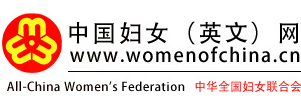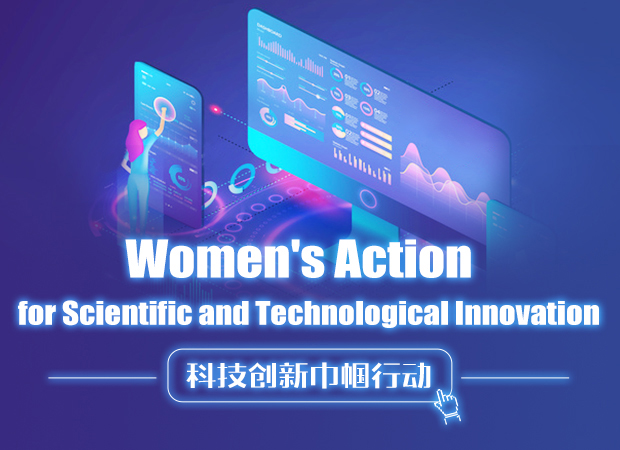Key Takeaways from Xi's 2024 Domestic Trips as China Looks Ahead to 2025
BEIJING, Dec. 30 (Xinhua) — Undaunted by skepticism, China has skillfully maneuvered through a turbulent landscape of challenges and opportunities in 2024, stabilizing its economic growth and showcasing extraordinary resilience.
As 2025 draws near, all eyes turn to the world's second-largest economy, watching closely to see how it will navigate the path of modernization and national rejuvenation in the face of sluggish global growth, mounting external pressures, and the internal challenges of weak demand and uneven development.
Clues to this trajectory have already emerged through Chinese President Xi Jinping's 2024 domestic inspection tours, where each stop — whether in bustling cities or vibrant rural areas — has revealed his vision for China's future and outlined a roadmap for the country's path forward.
Reform
Reform is the defining theme of 2024, resonating throughout Xi's inspection tours across the country this year.
In July, China unveiled a landmark resolution to set the stage for a new phase of reform aimed at advancing Chinese modernization. With a focus on the next five years, the blueprint outlines over 300 transformative initiatives, spanning the economy, politics, culture, society and more.
Building on this momentum, Xi inspected Xiamen in October, a city at the forefront of China's reform efforts. It was here, in 1985, that he began his work in Fujian Province as vice mayor of Xiamen. At that time, the Xiamen Special Economic Zone was still in its infancy, and Xi played a pivotal role in driving bold reforms.
During his visit, Xi viewed a screen display in an exhibition hall showcasing Xiamen's remarkable transformation, reflecting on the city's early pioneering efforts.
He flipped through a blue-bound book titled "1985-2000 Xiamen Economic and Social Development Strategy," a plan he had personally led. Recalling the plan, he said, "When we created this plan, we didn't have all the answers —how to establish a free port, manage the free movement of people, or set financial policies. We simply experimented, piloting initiatives and crossing the river by feeling for stones."
Xi highlighted the need to harness the spearheading role of economic structural reform, urging continued bold experimentation and the pursuit of self-driven reform. He called for efforts to fully unleash the vitality of investment and entrepreneurship across society while prioritizing reforms in public welfare.
After concluding his Fujian visit, Xi traveled to Anhui, the cradle of China's rural reform. In 1978, 18 farmers in Xiaogang Village took a daring step by secretly signing an agreement to contract collective land to individual households, sparking a wave of agricultural production enthusiasm and laying the foundation for the country's broader rural reform.
Anhui's tradition of reform and innovation now serves as a catalyst for its emergence as a key hub for tech innovation. Its capital, Hefei, is home to a diverse array of high-tech industries, including integrated circuits, new energy vehicles, artificial intelligence and quantum information.
During his inspection of Anhui, Xi called for pioneering and differentiated reforms, urging the establishment of a system that fosters comprehensive innovation by integrating reforms in education, science and technology, and talent development.
Sci-Tech Innovation
Sci-tech innovation, as underscored by Xi during his Anhui inspection, has taken center stage in China's transition from rapid GDP growth to high-quality development over the past few years.
In the 2024 Global Innovation Index, China climbed to 11th place, up 18 spots over the past decade, solidifying its status as one of the fastest-rising innovation-driven economies. It also leads globally with 26 of the top 100 science and technology clusters, underscoring its rapid innovation output growth.
Earlier this month, the annual Central Economic Work Conference, at which Xi made a key policy speech, highlighted sci-tech innovation among the nine key priorities for China's economy in 2025.
A week after the meeting, Xi visited the Macau University of Science and Technology. There, he was briefed on the development and latest achievements of key state-level laboratories at the university, including one dedicated to lunar and planetary science. Xi also observed the real-time operations of the "Macao Science 1" satellites jointly developed by the mainland and Macao on monitor screens.
He noted that China's achievements in lunar exploration — driven by the wisdom and dedication of generations of Chinese scientists — are a powerful testament to the country's remarkable progress in achieving technological self-reliance and innovation.
He also urged the researchers and faculty at the university to continue working toward new breakthroughs that will serve both the nation and humanity.
The integrated development of scientific and technological innovation with industrial innovation, emphasized during the recent Central Economic Work Conference, has also been a central focus of Xi's extensive inspection tours due to its crucial role in driving productivity breakthroughs in China.
While visiting the central city of Wuhan, Xi was briefed on wide-ranging achievements, such as a cutting-edge computer system for minimally invasive cardiac surgery, facilitated by a platform that seamlessly integrates the strengths of research institutes, universities, businesses and funding sources.
With keen interest, Xi asked detailed questions about critical issues related to China's reform of the industrial application of sci-tech advancements, including the development timeline, cost reductions, international competitiveness, and the progress of enterprise cooperation.
"Achieving high-level self-reliance in science and technology urgently requires the integration of technological and industrial innovation, as does developing new quality productive forces," Xi said.
Rural Revitalization
In the milestone resolution adopted in July, China proposed efforts to improve supporting systems to strengthen agriculture, benefit farmers, and enrich rural areas. Xi has stated, "The most challenging and arduous tasks we face in building a modern socialist China in all respects remain in our rural areas."
During his visits to the vast rural expanses of the country in 2024, Xi has closely examined the development of local industries — an essential pillar of China's rural revitalization strategy aimed at improving the lives of nearly 500 million people living in the countryside — through firsthand observations and in-depth assessments.
In the hinterland province of Gansu, Xi toured an orchard where rows of trees were ladened with ruby-red Huaniu apples, a specialty that has been cultivated for decades in the region.
Beneath the canopy of trees, Xi spoke with apple growers and agricultural technicians, encouraging them to strive for even greater success in developing the local apple industry.
"Rural revitalization must be driven by robust industries," he said. "Regions should build on their unique advantages and pursue development paths suited to their needs."
Xi's next inspection trip took him to a fishing village in an island county of Fujian, where he had toured 23 years ago. There, fishing boats were returning to port packed with fresh catches.
Delighted to see the tremendous changes taking place on the island, Xi urged locals to capitalize on its advantages and make good use of local marine resources.
"The countryside presents immense opportunities, and agriculture possesses significant potential," the president has stressed.
Opening Up
The concept of high-standard opening up has been highlighted throughout Xi's inspection visits, underscoring his commitment to global engagement as a driver of growth.
Xi has closely followed the development of the New International Land-Sea Trade Corridor, a vital trade route with its operational center in Chongqing, China's major manufacturing hub.
During his April visit to Chongqing, Xi was seen asking pointed questions at the corridor's operational control center, such as, "What are its cost advantages? What benefits does it bring? What obstacles still exist?"
The corridor has significantly shortened logistics time. As a flagship project of the Belt and Road Initiative, it connects 542 ports across 125 countries and regions through a network of railways, seas and highways.
Thanks to the corridor, the western region's import and export value through the trade route reached 514 billion yuan (around 71.5 billion U.S. dollars) in the first three quarters of 2024, marking a 15-percent year-on-year growth.
"Logistics are the lifeblood of the real economy," Xi said, stressing the importance of effectively managing the project to propel high-standard opening up in the country's western and inland regions.
In line with his broader vision of openness, Xi has paid attention to foreign-invested and joint ventures. In May, during his visit to Shandong, he convened a meeting with business leaders, including those from foreign ventures, to seek their insights on reform. Earlier, during his March visit to Hunan, he toured a Chinese-German joint venture, reaffirming China's dedication to expanding international partnerships.
"We welcome more foreign companies to invest and grow in China," Xi said at the BASF Shanshan Battery Materials in Hunan.
"China's door will continue to open wider," he added.
(Source: Xinhua)
Editor: Wang Shasha
Please understand that womenofchina.cn,a non-profit, information-communication website, cannot reach every writer before using articles and images. For copyright issues, please contact us by emailing: website@womenofchina.cn. The articles published and opinions expressed on this website represent the opinions of writers and are not necessarily shared by womenofchina.cn.






.jpg)

 WeChat
WeChat Weibo
Weibo 京公网安备 11010102004314号
京公网安备 11010102004314号